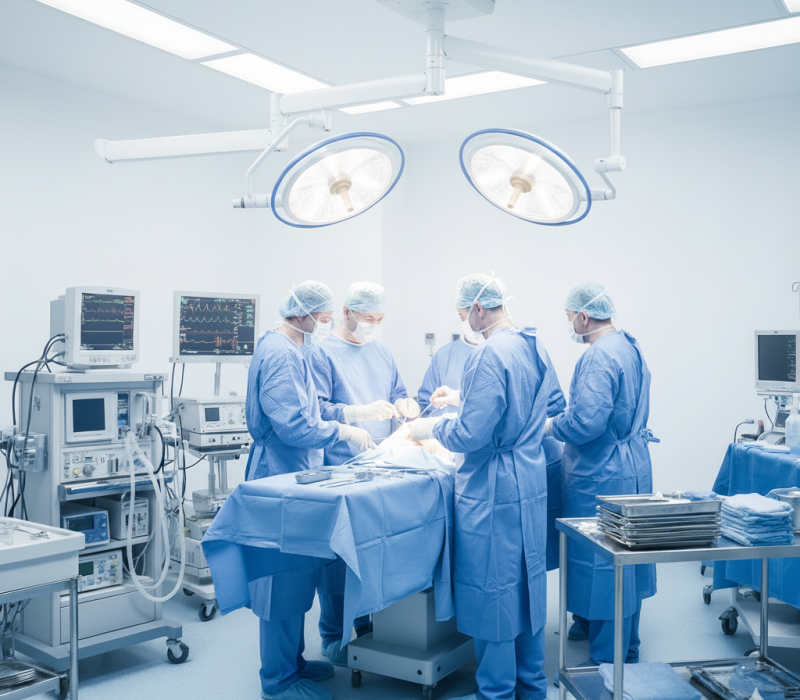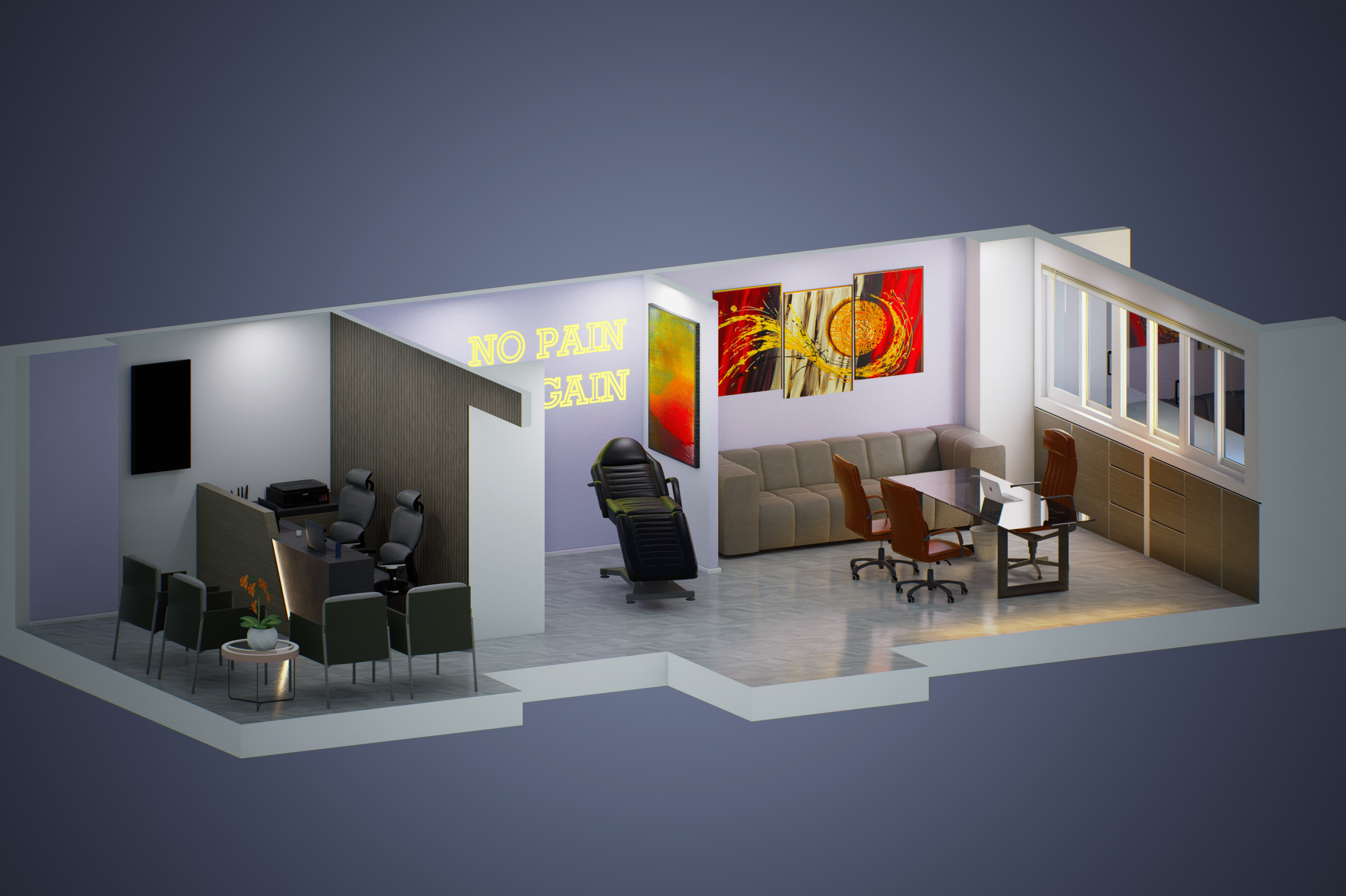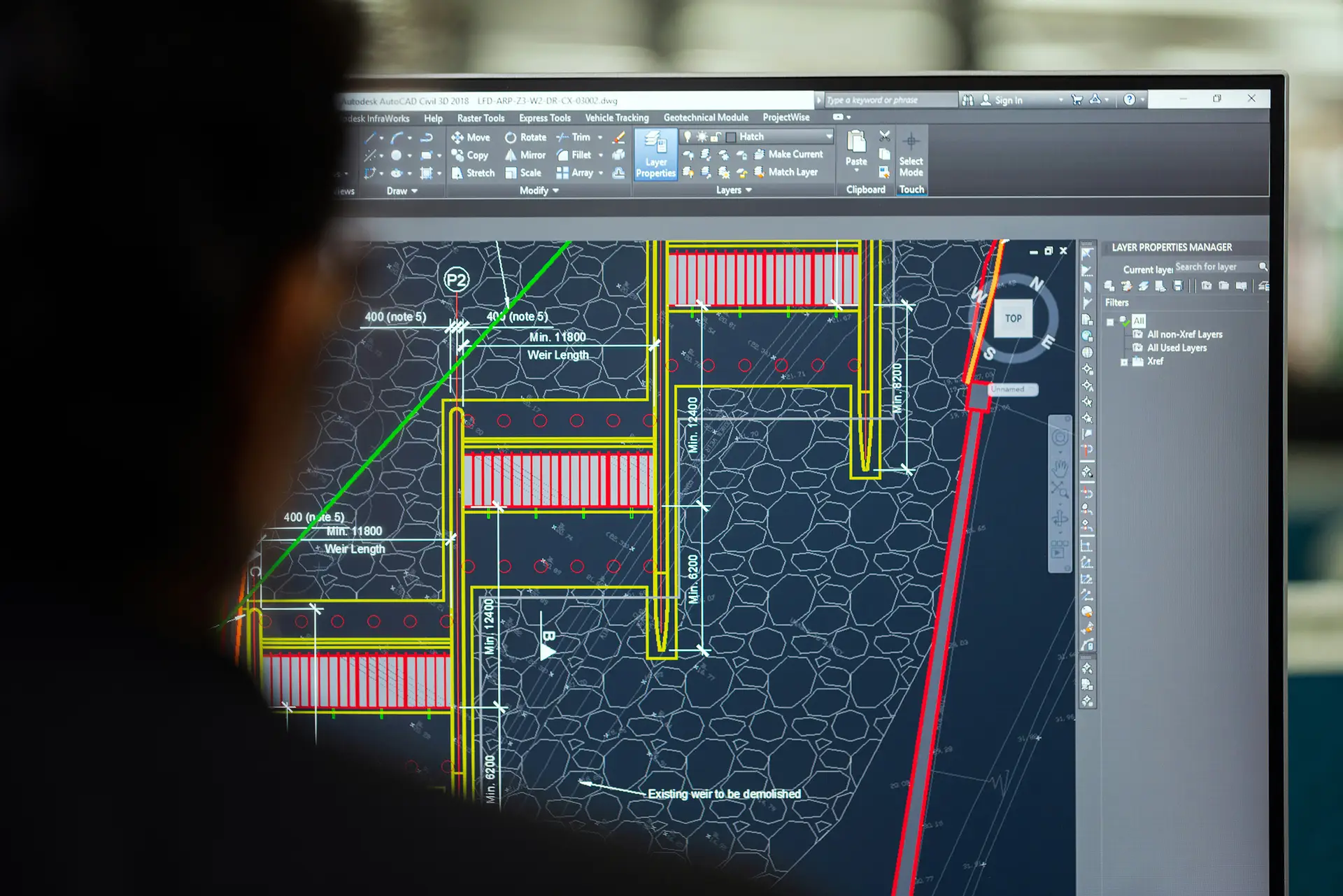Today, healthcare professionals understand the importance of a modern and distinctive design. Both private and public sectors are investing in medical environments that not only comply with all regulations and functional standards, but also incorporate aesthetic elements that enhance the experience of both staff and patients.
At Medical Spaces Design, we believe that effective healthcare spaces should be functional, welcoming, and sensorially uplifting. Our work focuses on meeting essential infrastructural requirements and applying design principles that optimize every facility’s performance, comfort, and patient experience.

Think about what your medical project should communicate and make sure your ideas are clearly reflected in the design concept—from the facade to the interior details. The goal is to create an environment that conveys professionalism, safety, and quality. A welcoming and visually appealing design will inspire positive emotions in your patients.
We ensure that the patient reception area is strategically located and fully accessible. The layout of the furniture should promote a smooth flow and remove obstacles. We focus on creating a pleasant, calming atmosphere through a well-balanced color palette and decorative accents that express sophistication and comfort.
Visiting a medical office can sometimes cause tension or anxiety. We help reduce these feelings by designing waiting areas with comfortable furniture and soothing elements. Adding art pieces or greenery can create a more uplifting atmosphere.
We also enhance the patient experience by including entertainment options such as ambient music, television, or complimentary Wi-Fi.
These are essential elements in any medical space. Natural light has a positive impact on people’s mood and creates a welcoming environment for visitors. Soft white tones and warm lighting help establish a calm and trustworthy atmosphere. It’s important to maintain consistent illumination to avoid harsh shadows and ensure patient comfort. Regarding ventilation, we equip your medical project with systems that renew and purify the air, helping to maintain freshness, eliminate odors, and reduce bacteria in the environment.
Regarding ventilation, we equip your medical project with systems that renew and purify the air, helping to maintain freshness, eliminate odors, and reduce bacteria in the environment.
Planning and executing a medical project require specialized knowledge that integrates legal, architectural, and aesthetic parameters. Our team handles everything—from layout design to interior detailing—using high-quality materials and evidence-based design strategies. The result is an efficient, modern, safe, and welcoming healthcare environment.



Healthcare architecture is the discipline responsible for developing the physical infrastructure of medical facilities. When properly designed, it optimizes workflows, improves patient care times, and ensures high standards of quality and safety. It also considers critical aspects such as risk management, resilience, maintenance, and long-term operational continuity.
Through specific design criteria, methodologies, and technical approaches, healthcare architecture integrates the economic, physical, and technological resources of each project within local regulations and international standards. A well-planned architectural design must feature durable, low-maintenance finishes and adapt to environmental conditions to ensure efficient and continuous operation of healthcare services.
At Medical Spaces Design, we believe that effective healthcare spaces should be functional, welcoming, and sensorially uplifting. Our work focuses on meeting essential infrastructural requirements and applying design principles that optimize every facility’s performance, comfort, and patient experience.
The design, development, and execution of healthcare projects require a multidisciplinary approach involving professionals with expertise in interior design or architecture. It demands a clear understanding of scales, construction elements, finishes, and furnishings, as well as a deep comprehension of the design components and technologies needed to address the challenges of projects focused on healthcare, wellness, and medical environments.
The professional responsible for leading the projects must have training in the design, construction and management of healthcare infrastructure, incorporating basic knowledge about the equipment and its demanding installation systems.
Hospital engineering is a specialized discipline focused on the planning, design, implementation, maintenance, and management of medical facilities to deliver effective solutions to the complex challenges of the healthcare environment. Its main goal is to ensure that hospitals and medical centers are functional, efficient, and safe spaces—capable of adapting quickly to changing needs and emergencies while intelligently incorporating technological advances.
This discipline encompasses technical, logistical, and management aspects to guarantee that healthcare facilities operate efficiently and comply with health and safety regulations. It plays a key role in delivering high-quality medical care to patients and providing a suitable working environment for healthcare professionals.
At Medical Spaces Design, we believe that effective healthcare spaces should be functional, welcoming, and sensorially uplifting. Our work focuses on meeting essential infrastructural requirements and applying design principles that optimize every facility’s performance, comfort, and patient experience.


Healthcare engineering is responsible for designing and maintaining a hospital efficiently. It ensures that there is sufficient space for patients, healthcare personnel, and equipment, guaranteeing comfort, operability, and safety at all times. It also ensures that the hospital can cope with the flow of patients and has the necessary capacity to respond to emergency situations while maintaining its standards of care.
Hospital engineering is essential for the application of state-of-the-art devices and systems in the healthcare environment. It ensures that more accurate diagnostic equipment such as magnetic resonance imaging and innovative treatments such as robotic surgery can be safely incorporated. It therefore facilitates the use of advanced medical technology to make more accurate diagnoses and more effective treatments, improving healthcare in general.
Healthcare engineering also deals with creating and maintaining the technological systems that guarantee patient safety, making it essential in infection prevention, risk management, and the safety of the facilities themselves. In fact, it is essential for implementing control and monitoring systems in critical areas such as operating rooms and intensive care units. For this reason, the intervention of hospital engineers helps to reduce accidents, logistical failures, and medical errors.
Today's hospitals operate thanks to complex, interconnected, and interdependent facilities that must comply with a series of regulations and health standards to ensure the safety of patients and staff. Health engineering ensures that hospital infrastructure meets safety requirements and that medical equipment functions as intended.
Hospitals consume a lot of energy as they are usually open 24 hours a day, 365 days a year. It is not just electricity, but also water, medical gases, and compressed air, which is why hospital engineering is key to implementing more efficient systems that reduce costs and minimize the environmental impact of healthcare services.
Brand management—also known as branding—is a strategic marketing process that strengthens a company’s reputation and increases the value of its products and services. Its main goal is to build a strong market presence and inspire confidence among clients.
Effective brand management must always align with a company’s core values and reflect them consistently across every action, interaction, and client relationship.
Brand Management Involves
To manage a brand, we follow these steps